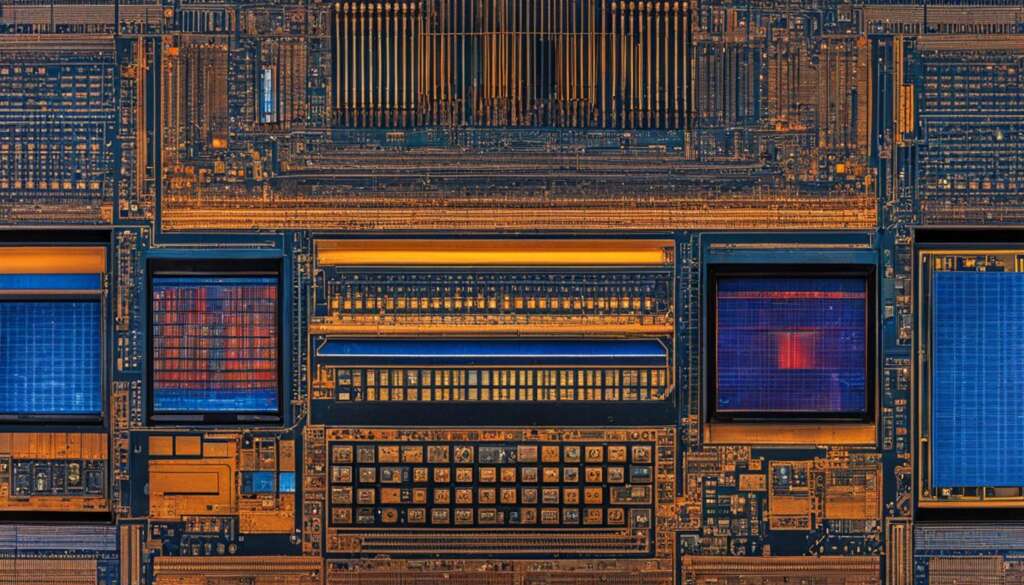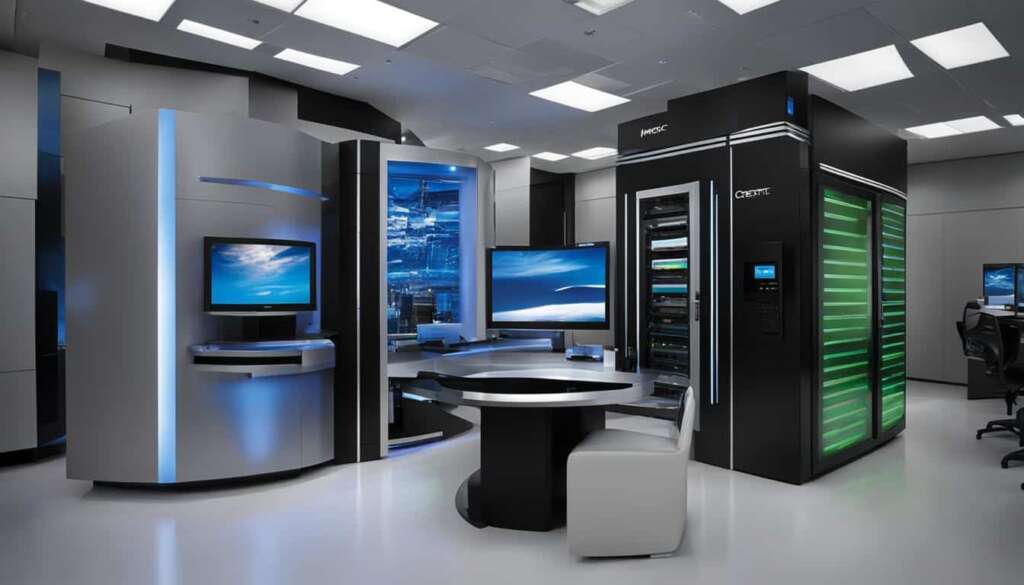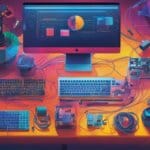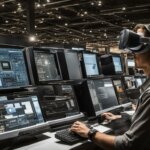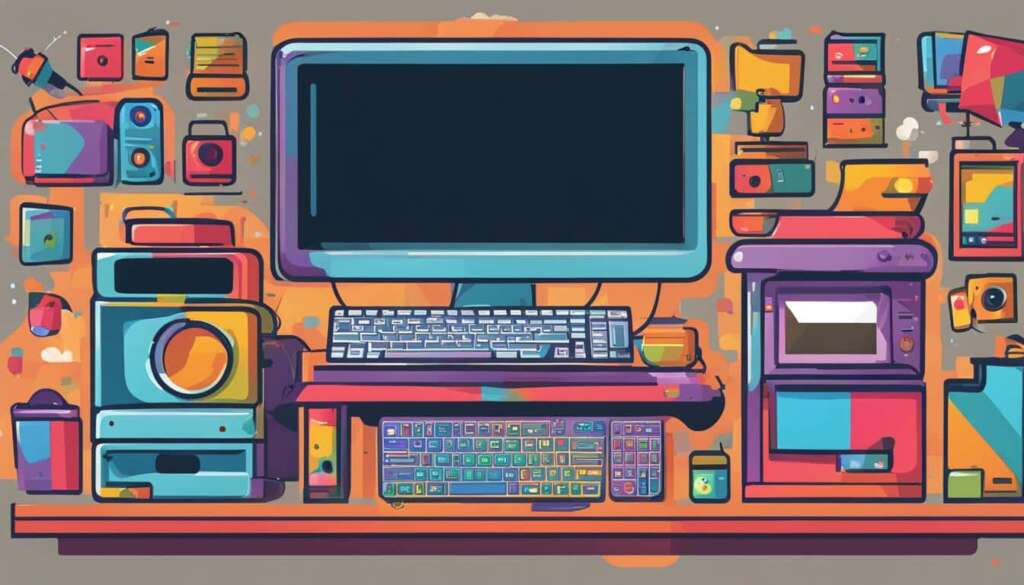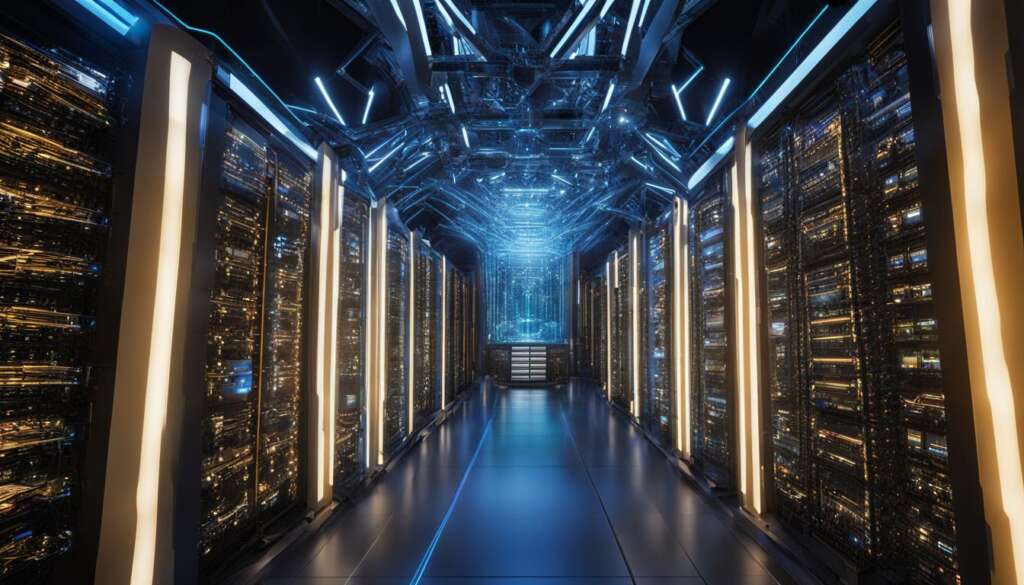Table of Contents
Welcome to our captivating journey into the world of microcomputers. In this article, we will delve into the definition of microcomputer and explore its transformative potential in society. Brace yourself as we unravel the remarkable impact of this small yet mighty electronic device.
The fascinating realm of microcomputers began in 1975, forever changing the landscape of computing. Previous to their advent, computers were extravagant machines primarily accessible to large corporations. However, microcomputers revolutionized the scene, bringing computing power to the masses.
Let’s briefly journey back through time to witness the birth of the microcomputer. The first modern computers emerged in the 1950s, laying the foundation for this groundbreaking innovation. The early pioneers of computing set the stage with breakthroughs in theoretical frameworks and technical advancements.
Today, microcomputers have profound implications across various sectors, from business and communication to education and entertainment. They have not only inspired the creation of new industries and companies but also shifted power dynamics within businesses. The English language itself has been influenced by their evolution, a testament to their enduring impact.
Are you ready to dive deeper into the fascinating world of microcomputers? Let’s embark on this enthralling journey of discovery and innovation.
The Evolution of Microcomputers
The development of microcomputers is intertwined with the rich history of computing. Various technological advancements, including the decimal system, binary mathematical system, Boolean algebra, and the discovery of electricity, laid the foundation for the creation of computers.
In the 17th century, the first automatic calculator that utilized wheels and gears was invented, marking a significant leap in computational technology. This invention was followed by Joseph Jacquard’s development of a loom using punch cards in the 19th century. Charles Babbage further revolutionized computing with his design of the “Analytical Engine,” which employed punch cards for complex calculations.
In 1888, Herman Hollerith’s calculating machine emerged, ultimately revolutionizing computing by tabulating the U.S. Census in 1890. This groundbreaking achievement paved the way for the development of small electronic computers.
However, it was the invention of the transistor in 1947 that truly propelled the evolution of microcomputers. The transistor replaced bulky vacuum tubes, allowing for the creation of smaller and more efficient electronic devices.
The first fully transistorized large computer was built in 1958, marking a significant milestone in computing history. This breakthrough led to the development of microprocessors and computer chips, which ultimately enabled the birth of microcomputers as we know them today.
By the end of the 1960s, computers had become widely used in industries and businesses, setting the stage for the imminent era of personal computers.
With a clear understanding of the historical advancements that shaped modern computing, it becomes evident that microcomputers have a rich heritage and are deeply rooted in the foundations of technology.
Microcomputer Applications and Uses
Microcomputers have revolutionized various fields with their diverse applications and versatile uses. One of the earliest sectors to adopt microcomputers was school offices, where they were employed for efficient administrative tasks.
The range of applications for microcomputers is vast. They can be utilized for:
- Database management systems
- Electronic spreadsheets
- Word processing
- Graphics
- Communications
- Networking
- Registration
- Class scheduling
- Support service management
- Energy management
- And more
These powerful tools streamline processes, boost efficiency, and provide easier access to vital information. In the realm of education, microcomputers have become indispensable tools for managing schools and school districts. They facilitate communication, bolster record-keeping, aid in data analysis, and enable effective organizational management tasks.
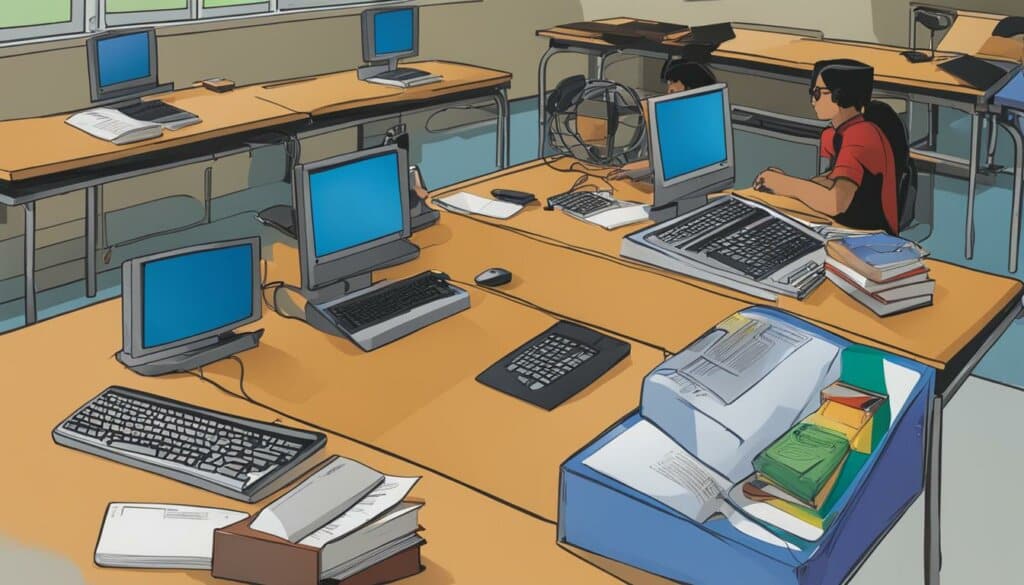
| Microcomputer Applications | Description |
|---|---|
| Database Management Systems | Organize, store, and retrieve structured data efficiently. |
| Electronic Spreadsheets | Perform complex calculations and create visual representations of numerical data. |
| Word Processing | Create, edit, and format text-based documents. |
| Graphics | Design and manipulate visual elements, such as images and illustrations. |
| Communications | Facilitate information exchange through various communication channels. |
| Networking | Connect devices and enable data sharing and collaboration. |
| Registration | Manage enrollment and registration processes efficiently. |
| Class Scheduling | Create and manage schedules for classes and activities. |
| Support Service Management | Coordinate and streamline assistance services. |
| Energy Management | Control and optimize energy usage. |
The wide-ranging applications of microcomputers have drastically transformed how institutions and organizations operate, increasing productivity and enabling seamless management of complex tasks.
The Future of Microcomputers
Innovation has always been at the forefront of microcomputers, and the future is teeming with exciting possibilities. Constant technological advancements suggest that microcomputers will continue to shrink in size, while simultaneously becoming faster and more powerful. This trend opens doors to new applications and creates a world where microcomputers seamlessly integrate with emerging technologies like artificial intelligence (AI), virtual reality (VR), and the Internet of Things (IoT).
By embracing AI, microcomputers will be able to think and learn like humans, revolutionizing various sectors such as healthcare, education, and automation. Imagine a microcomputer equipped with AI that assists doctors in diagnosing and treating patients. It could analyze vast amounts of medical data, provide personalized treatment recommendations, and enhance overall healthcare outcomes.
The integration of VR technology with microcomputers will take immersive experiences to new heights. With a powerful microcomputer serving as the backbone, users can explore virtual worlds, interact with realistic simulations, and unlock unlimited entertainment possibilities. Education will also benefit as students can engage in virtual field trips, conduct complex experiments, and learn in ways that were previously unimaginable.
The IoT will play a pivotal role in expanding the capabilities of microcomputers. By connecting devices and creating a vast network of interconnected systems, microcomputers will be able to seamlessly communicate, share information, and work in harmony to simplify our lives. Imagine waking up in the morning as your microcomputer, connected to your alarm clock, switches on the coffee machine, adjusts the room temperature, and prepares a personalized morning briefing.
As technology continues to evolve, our reliance on microcomputers will only grow stronger. They will remain essential in shaping the future, transforming the way we live, work, and interact with the world. The possibilities are endless, and the future of microcomputers promises to be a thrilling journey as they continue to push boundaries and redefine what is possible.
Conclusion
Microcomputers have revolutionized the world of technology, bringing computing power to individuals and transforming various industries. From their humble beginnings in the 1970s, microcomputers have evolved into versatile tools used in myriad applications. With ongoing advancements and innovations, the future of microcomputers holds promise for further transformation and new possibilities.
The impact of microcomputers on society cannot be overstated. They have increased accessibility, enabling individuals to harness the power of computing for personal and professional purposes. Microcomputers have also inspired new industries and companies, driving innovation and creating opportunities for success.
As technology continues to advance, microcomputers will remain vital in the ever-changing digital landscape. Their potential for further development, coupled with their ability to integrate emerging technologies, will shape the future of healthcare, education, entertainment, and automation. Whether it’s through the integration of artificial intelligence or the expansion of the Internet of Things, microcomputers will continue to play a crucial role in our lives.
In conclusion, microcomputers have paved the way for a new era of technology, transforming society and empowering individuals. Their impact will only grow stronger as they continue to evolve and adapt to the ever-changing digital landscape. The journey of microcomputers is far from over, and the possibilities they hold for the future are truly remarkable.
FAQ
What is a microcomputer?
A microcomputer is a small, affordable, and versatile electronic device that is essentially a personal computer. It was introduced in 1975 and has played a transformative role in society.
How would you define a microcomputer?
A microcomputer is a compact and accessible personal computer that has significantly impacted various aspects of society, including business, communication, education, and entertainment.
What are the features of a microcomputer?
Microcomputers are small in size, affordable, and offer versatility in their applications. They are capable of performing functions such as database management, word processing, graphics, communication, networking, and more.
Can you provide some examples of microcomputers?
Examples of microcomputers include desktop computers, laptops, tablets, smartphones, and even wearable devices such as smartwatches. These devices have become indispensable tools in our daily lives.
How have microcomputers been used throughout history?
Microcomputers have revolutionized the computing landscape by making computers accessible to individuals. They have been utilized in various industries for administrative tasks, database management, communication, record keeping, data analysis, and organizational management.
What is the future of microcomputers?
With ongoing technological innovation, microcomputers are expected to become even smaller, faster, and more powerful. They may integrate artificial intelligence, virtual reality, and other emerging technologies, enabling new possibilities in fields such as healthcare, education, entertainment, and automation.
Will microcomputers continue to shape the future?
Absolutely! As technology advances, microcomputers will continue to play a vital role in shaping the digital landscape. Their increasing connectivity to other devices through the Internet of Things (IoT) will further enhance their capabilities and impact various industries.


